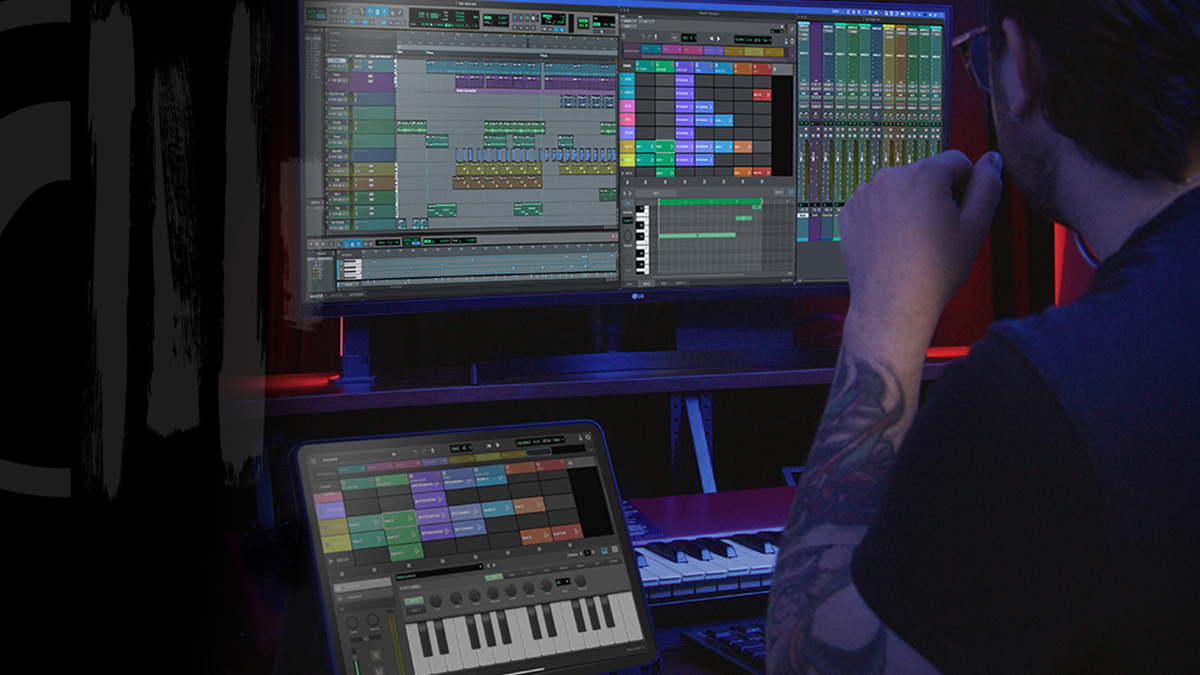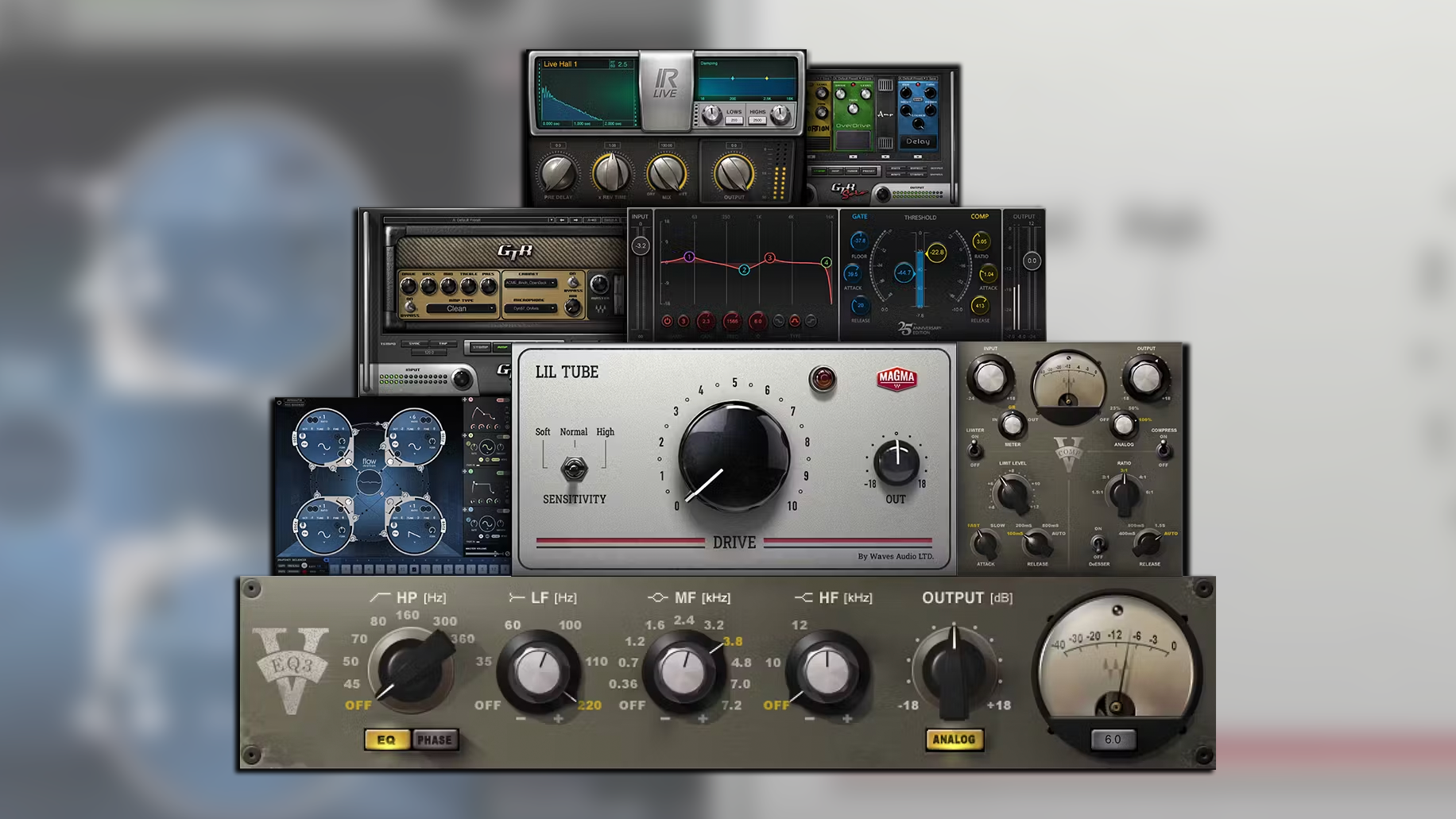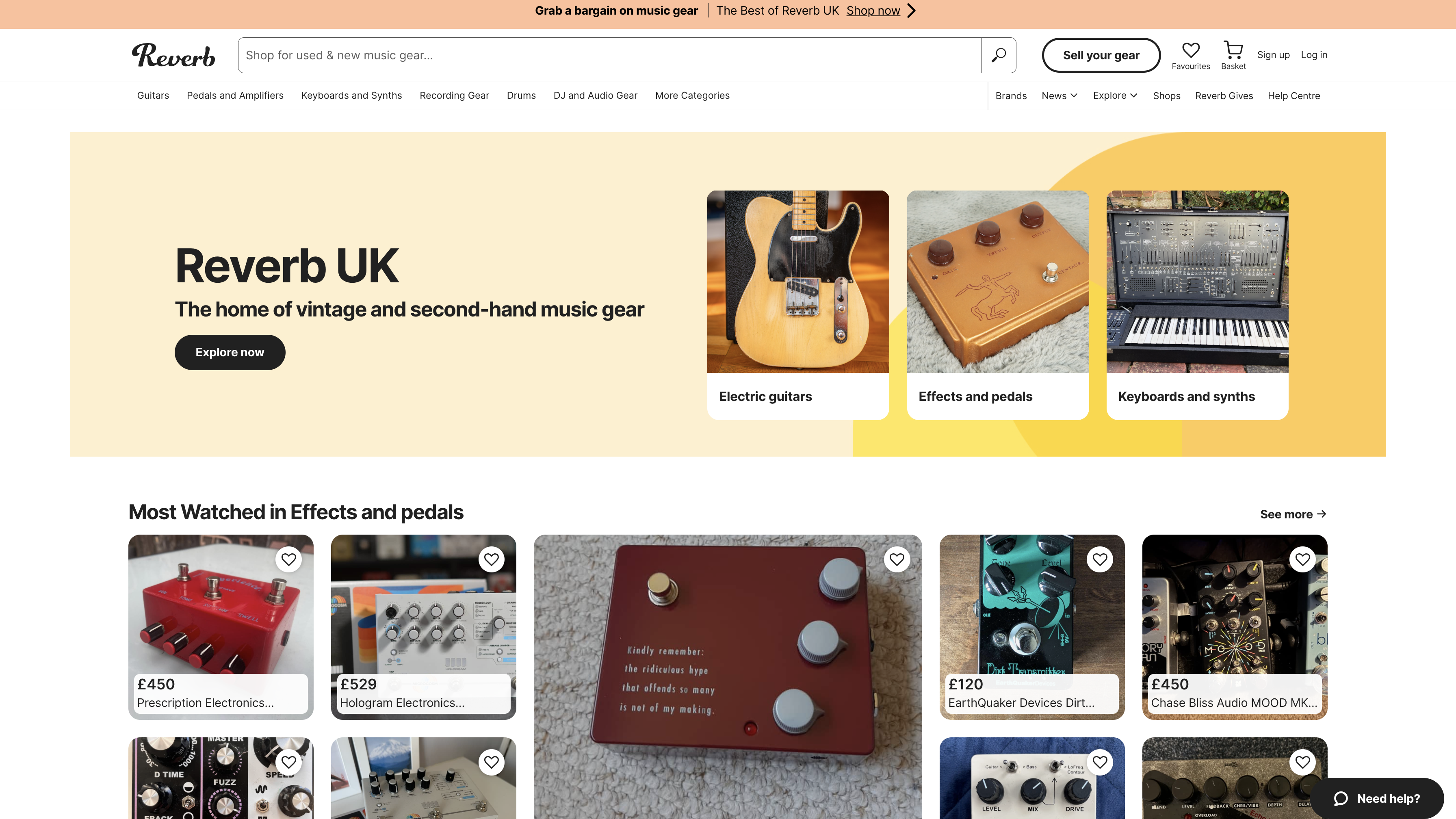Is Pro Tools a worthy investment for home producers?
It’s an industry standard, but is Pro Tools still worth it in 2024? We weigh up the pros and cons
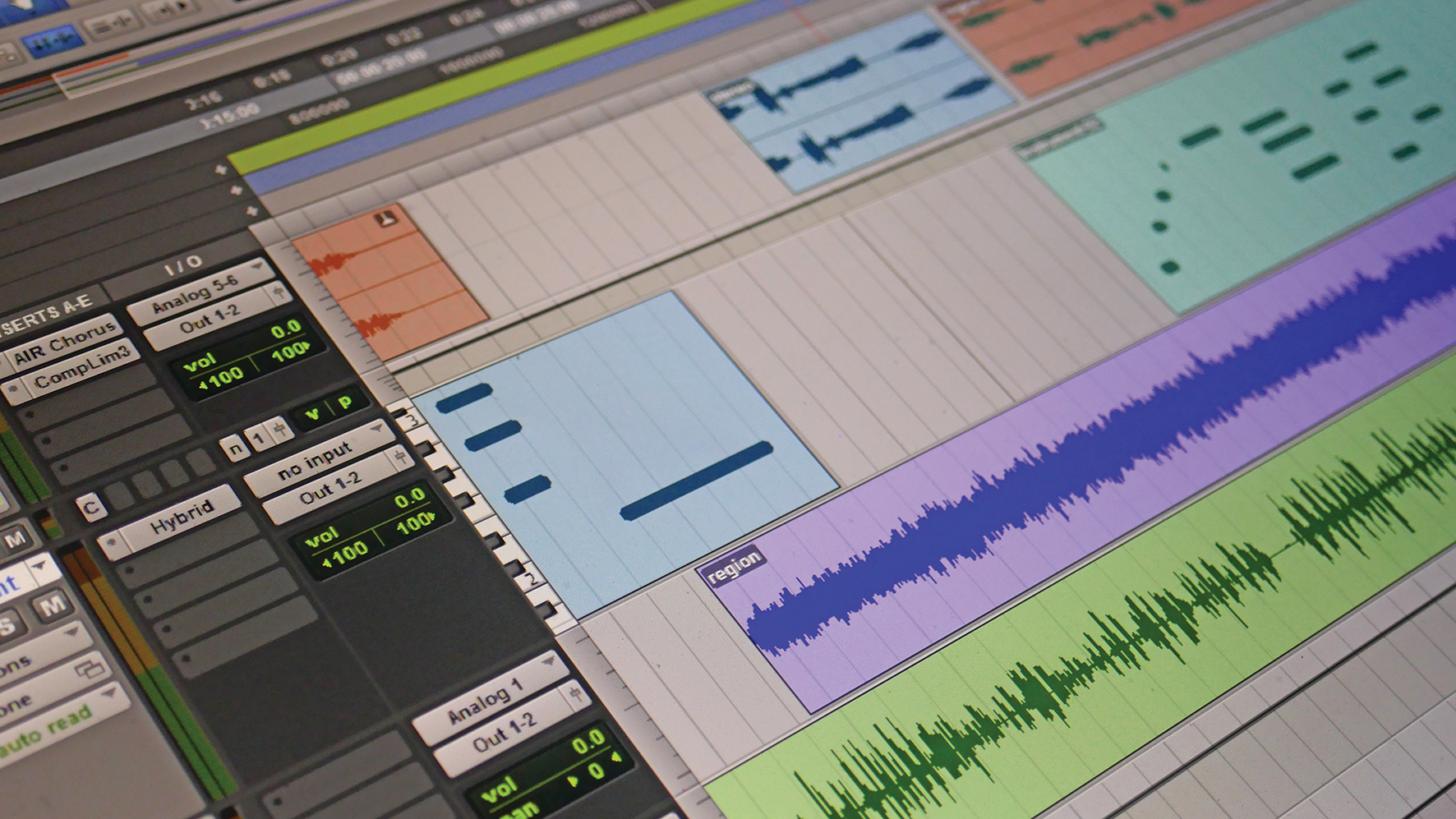
When it comes to producing music at home, what is the most important thing to get right? What one piece of kit, software or treatment is going to make your tracks sing? Is it your monitor speakers? Is it that classic outboard gear? Or, is it the fact that there’s an amazing coffee shop and a Greggs just around the corner? It’s actually none of these things.
It’s all down to the DAW you choose to use. By which we mean…it’s not that either. Everyone will extoll the virtues of why DAW ‘X’ is better than DAW ‘Y’. People will argue for hours about which EQ plugin (which only works on their chosen platform) is the thing that makes or breaks a track, or that if you walked an extra 100 yards from the studio, there’s an M&S round the corner that has infinitely better sausage rolls.
In a desperate attempt to leave the sausage roll analogy behind, I will just say this. You can have the most expensive sausage meat (DAW), with the best pastry (plugins) and the most expensive, shiny oven (mix room). But, if you don’t have the skill and talent of a master baker, your sausage rolls will be as tasty as the out-of-date, mass-produced sausage rolls at the back of the fridge at the garage on the B4073 just outside of Peterborough.
Tool of the trade?
We all know that Pro Tools is the industry-standard DAW, but is it still a vital purchase for the home producer? Of course, there are many lucky people who have an entire studio setup in their house, including a live room and mix room. But there are also far more who have a desk in their bedroom or spare room making music for the masses, and this is the central group of producers that we’re going to focus on.
The vast majority of these producers are making electronic-based (or adjacent) music. And making electronic music (since 1981) uses MIDI as its lifeblood. Therefore, some form of sequencer (although there were pre-MIDI sequencers, analogue hardware that utilised control voltage and gate signals to trigger synths). So, the easiest, cheapest and most effective way to utilise control, soft synths and mix is the DAW. But when it comes to making music, not all DAWs are equal.
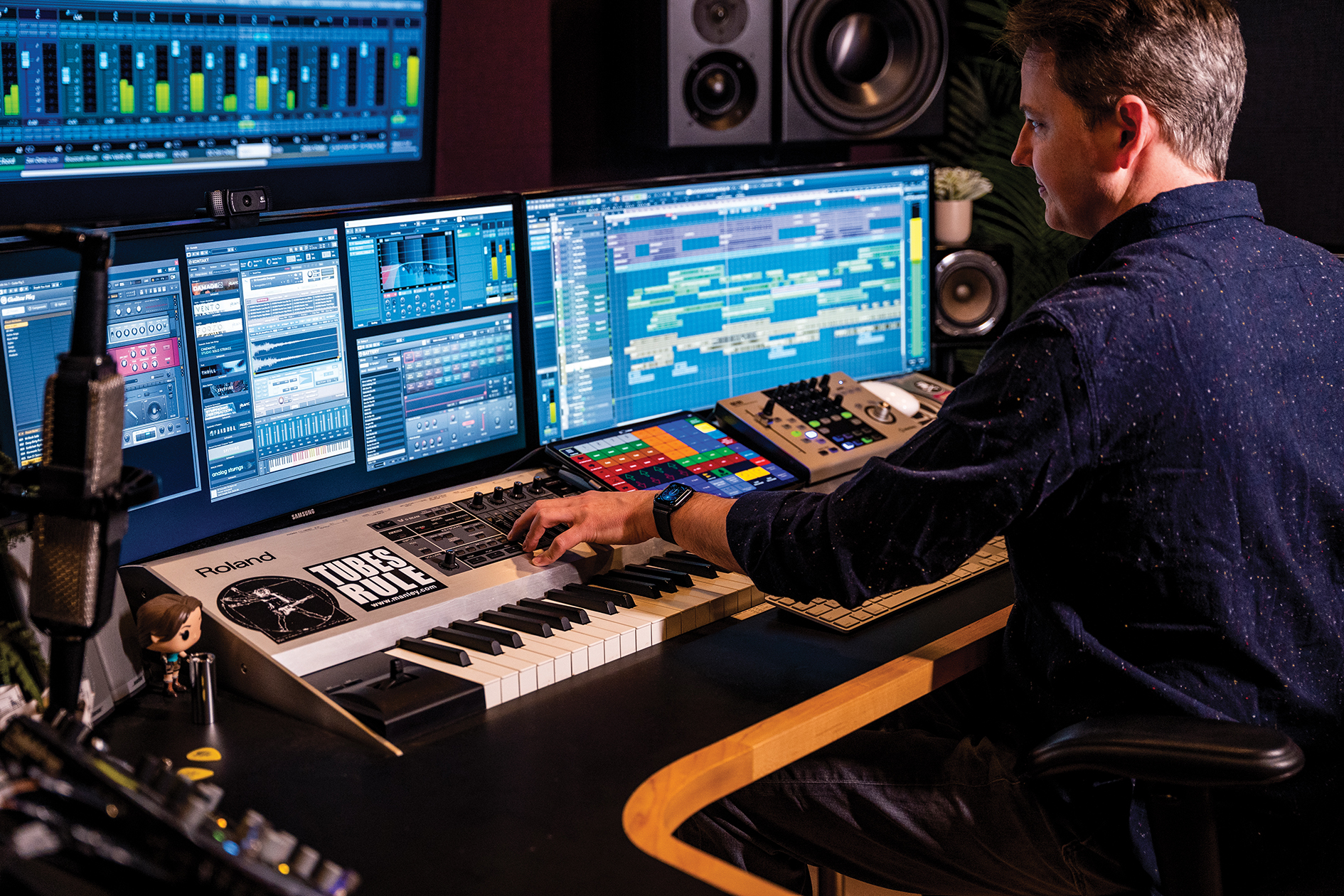
Best DAWs 2024: The best digital audio workstations for PC and Mac
Ableton Live, Logic Pro and Reason are all excellent for in-the-box workflows and come packed with tools and instruments. For more integrated work, Cubase and Logic often top lists due to their extensive MIDI capabilities. But here’s a bold statement: Pro Tools, in this writer’s view, has without doubt, always been, and continues to be the best software to mix and edit in. It’s the industry standard for a reason, making file and project transitions over to professional studios for mixing and mastering a breeze. It’s also expected in certain circles. Why? let’s explain…
It’s pivotal to reiterate that your choice of DAW should always focus around your workflow and what you want to do with it. On that front, and taking into our account our overall view on Pro Tools, let’s dig into some of the areas where it may not be necessary.
Get the MusicRadar Newsletter
Want all the hottest music and gear news, reviews, deals, features and more, direct to your inbox? Sign up here.
Ableton Live, Logic, Reason, Cubase and Pro Tools, for that matter, all come with a selection of soft synths, drum machines and samplers. To add our first con to the column, It is in the virtual instruments area that Pro Tools falls down slightly. There are many, many virtual instrument plugins that are VST/AU-only. Natively, Pro Tools does not support VST/AU plugins; additionally, AAX plugins (Pro Tools format) are sometimes more expensive than the equivalent as a VST.
That being said, there are many ways to use VST/AU plugins in Pro Tools, including using a wrapper plugin, which essentially works as an interface between the plugin and Pro Tools. You can use ReWire to connect Pro Tools and an external third party VST host, or, should you have standalone soft synths, you can use Pro Tools Audio Bridge (essentially a virtual sound card installed with Pro Tools) to route audio to and from the standalone software. But, with all these solutions, you are adding an extra layer of software and therefore increasing memory and processor requirements, and in some cases, this can introduce latency – a major bugbear.
A quick sketch
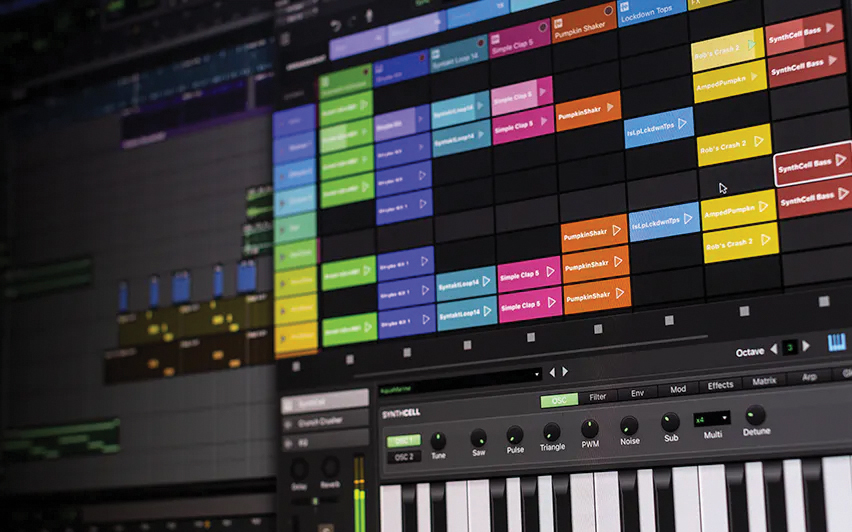
With the release of Pro Tools Sketch in 2023, Pro Tools has acquired some of the composing and sequencing functionality that it had been lacking, especially in comparison to Cubase and Logic, and loop-based composition in comparison to Ableton Live and Reason.
Sketch does has one advantage over the other options, in that not only does it run as a windowed process within Pro Tools, but also is available as a standalone iPad app. Creating on the iPad has much of the same functionality as the DAW, but also allows for your on-the-go projects to be directly and seamlessly imported into Pro Tools, either as MIDI data, loops or fully-rendered audio that include any plugins and effects that were being used in Sketch.
Now, dependent on the genre of music, producers and composers may require notation-based composition tools and as such, the leader in this area is still, without a doubt, Cubase. Cubase has an advanced integral score editor allowing the creating of professional score layouts, additionally being capable of importing and exporting MusicXML files. Cubase is not the only one of the discussed DAWs to have an integrated score editor, as Logic Pro also incorporates extensive scoring options.
Pro Tools, on the other hand, does not come with these features out of the box. However, it does have a super-tight integration with Avid’s hugely respected Sibelius. Score composition can be created either within the desktop or mobile app and easily shared between them and Pro Tools. Sibelius, being a totally separate piece of software, is a much more comprehensive suite than the Cubase offering. However nothing in life is free, so be prepared to add the cost on top of your Pro Tools subscription.
Talking costs, we’re looking at several different pieces of software here – all of which may excel in certain areas and be lacking in others. It must also be remembered that the term ‘digital audio workstation’ is extremely wide-ranging. The central point we’re making here – despite our overarching love of Pro Tools – is that you need to continually ask, ‘What do I do most of? and select the best package for your criteria.
The cost factor
With this in mind, what are the costs of ownership for these different DAWs? Back in the day, cost of software was just that: you bought the software, installed it as many times as you wanted on different machines and everyone was happy – well, except the developer.
These days, of course, you can’t move for subscription models, this new paradigm is a big component of the current Avid universe, though perpetual license options are available from third-party retailers (typically around the £550 – £600 mark). In order to do as close a comparison as possible, let’s look at the mid-range option of all the software packages. Pro Tools Studio has its official annual subscription of £259 (Sibelius Artist is an additional £89 per year), Ableton Live 12 Standard is £238 as an outright purchase, Logic Pro is £200 outright, Reason 12/13 is either £199 per year or £499 outright, and Cubase Artist is £280 outright.
When it comes to immersive audio, Pro Tools has always had a reputation for being the best served, and its deep integration into film post-production has a lot to do with this. Immersive audio has always had a tight third-party integration into Pro Tools’ workflow, but now, with the advent of Dolby Atmos, things have changed slightly.
When Atmos was first released back in 2012 as part of Pixar’s Brave (Seriously! What? Where has the time gone?), it was exclusively a Pro Tools plugin suite with external Dolby Atmos Renderer software. As time has gone by, Dolby has worked with developers in order to bring the Dolby Atmos Music Panner and associated workflows to Ableton Live, Logic, Nuendo, Cubase and even PreSonus Studio One. Depending on the level of the DAWs integration with Atmos, there may be a requirement for the addition of the Atmos Renderer, and of course, an additional cost (!).
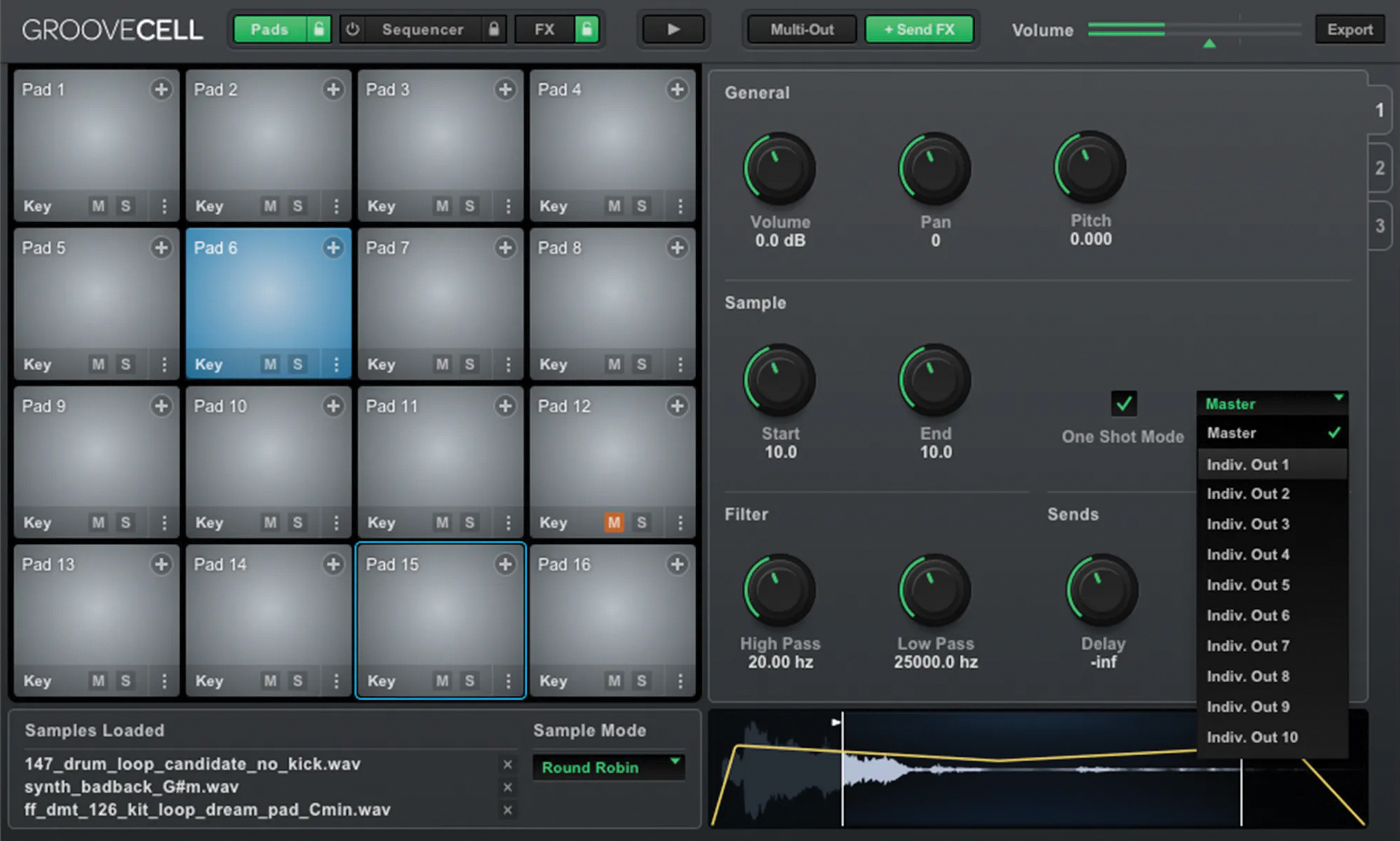
"It's the marmite of DAWs!": 7 things I love about Pro Tools (and 3 that I really don't)
As we are somewhat on the subject of mixing, let’s talk about the integration of external control surfaces – and we’re talking mixers, specifically – with the DAWs we’ve been discussing. There really is no excuse for any music software not to integrate with external mixers, and they all support MIDI control to some degree. However, MIDI was never originally designed to have large control surfaces attached to it, and as such, control of a workstation can often be limited to volume, pan and occasionally limited plugin control. This is one area where Pro Tools does shine above the others with it’s integration of EuCon.
EuCon, originally designed by Euphonix (who, unsurprisingly, Avid also own) is a high-speed, ethernet-based control protocol. Pro Tools takes full advantage of EuCon via the separate and free EuControl app. The advantages that EuCon-enabled control surfaces have over standard MIDI CC (control change) is that you can essentially control any part of Pro Tools directly from the mixer. This includes accessing and altering plugins, inserts, auxes, channel levels, groups, mutes – you name it… basically anything – in addition to some larger format control surfaces providing access to non-audio-related functions such as file management. It’s a superb means of control.
I’m sure some of you might be sat there thinking, ‘but I thought this was about home producers, how is this relevant?’ Well, I personally operate old Euphonix MC and Avid Artist Mix surfaces at my own home studio on Pro Tools, and have access to many of the aforementioned features. It’s a far better experience than trying to operate it via a MIDI-based surface or similar, which is actually quite frustrating.
Live and kicking
Finally, lets take a leap forward – out of the home studio, out of the bedroom and onto the stage. Performance-wise, which (if any) of these DAWs come out on top for live use?
Having worked as a live touring engineer for many years, it was interesting for this writer to see the increased proliferation of artists touring, using Pro Tools systems for backing tracks, click tracks, FX and synchronisation. For larger-scale artists, there is a very obvious connection as to why the overwhelming majority of these systems were Pro Tools. That is because of its position as the preferred DAW in professional studios around the globe. However, with smaller acts, Ableton Live, Logic and even FL Studio have all appeared on input lists we’ve been handed. When it comes to live work, the two key areas artists look for are reliability and ease/speed of use. Without a doubt, Live and Logic are the forerunners here.
So, is Pro Tools worth it for the home producer? As we hope we’ve reiterated enough, it all comes down to personal preference. Even as a forever Pro Tools user I might veer to a two-package solution, and indeed I use Ableton Live for certain things, yet I always come back to Pro Tools for mixing and editing. Why? Because it’s what I know. The central factor to consider is which DAW keeps you attached to your creative workflow. Though, Pro Tools is certainly worth learning if you’re aiming to step up into industry. That’s where it rules the roost.
Rob has been a professional sound engineer and designer for over 25 years. He has toured as a FOH engineer, worked in studios on both sides of the Atlantic and currently works almost exclusively in broadcast. When he’s not writing or mixing he can be found performing standup comedy around the country, but is still unsure who, if anyone, it benefits.
